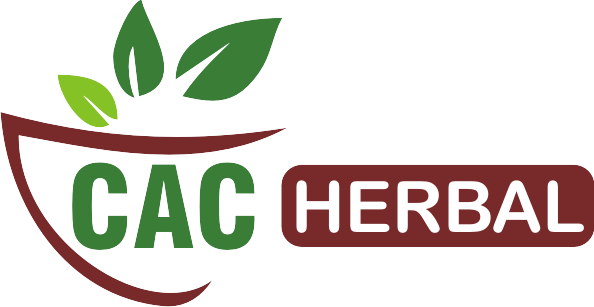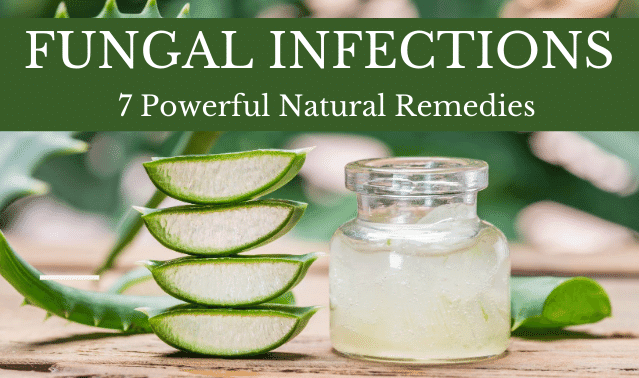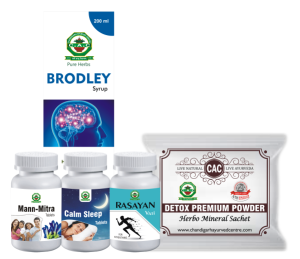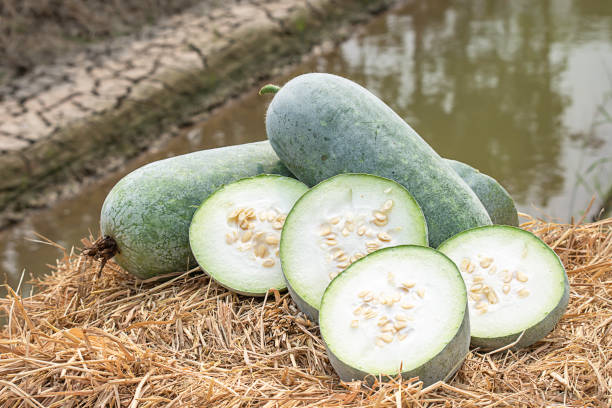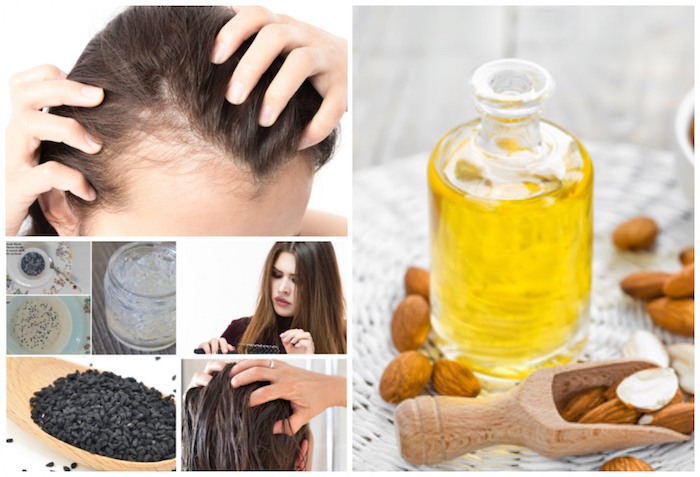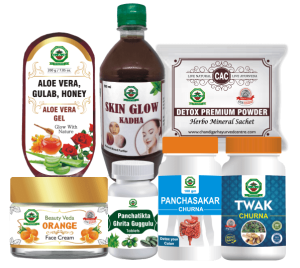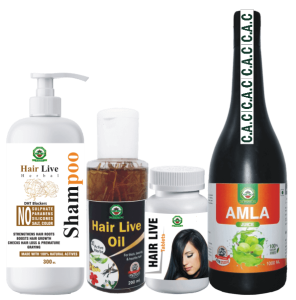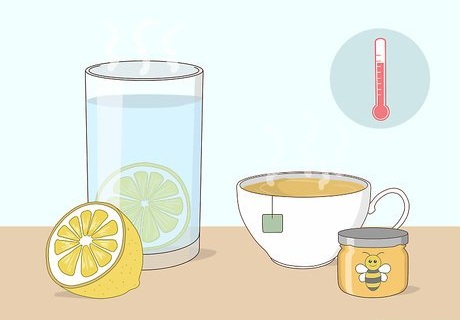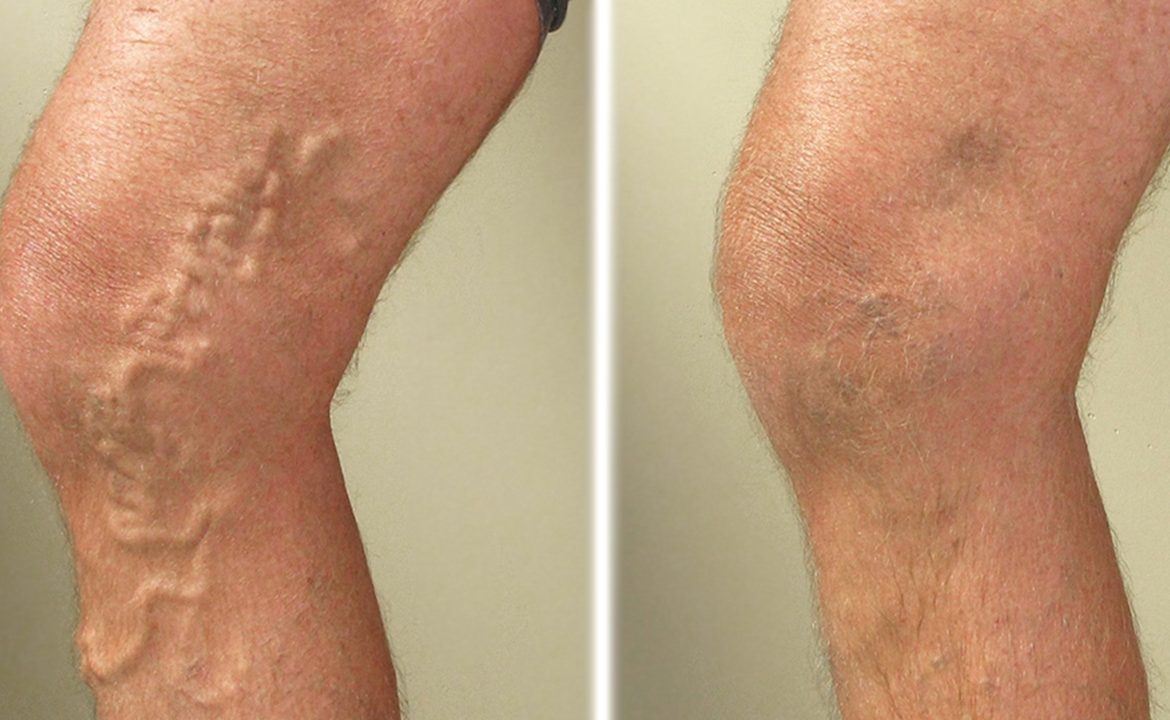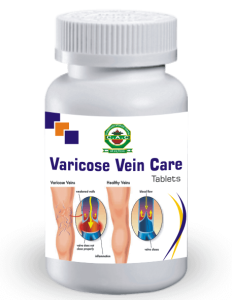Author Archives: admin
HOME REMEDIES FOR FUNGAL INFECTIONS
- 30 Sep, 2021
- Posted by admin
- 0 Comment(s)
Many people suffer from fungal infections at least once in their lifetime. Poor hygiene, warm climate and humidity, are main possible causes of fungal infections. Diaper rash, athlete’s foot, jock itch, and oral thrush are some common examples of fungal infections. Many fungi causing these infections are already becoming resistant to more aggressive forms of medications.
CAUSES OF FUNGAL INFECTIONS
- Hot and humid climates, wearing clothes that are damp, sweating too much, can result in the development of fungal infections.
- Decreased immunity due to some underlying diseases like diabetes, HIV, cancer etc. can cause fungal infections.
- Living in an unhealthy/polluted environment and not maintaining personal hygiene causes fungal infections.
- Wearing dirty clothes, unclean socks and innerwear can lead to fungal infections.
- Wearing too tight clothes can cause sweating, further resulting in the development of fungal infections.
- Obesity can lead to fungal infections. As moisture is be retained in skin folds, further giving a breeding ground to infection causing fungus.
- Stress can also compromise our immunity and can cause many diseases including fungal infections.
- Hormonal changes in pregnancy most of the times leads to vaginal infections.
REMEDIES
-
YOGURT AND PROBIOTICS
Yogurt and other probiotics have an rich amount of good bacteria that help get rid of many fungal infections. Fermented foods are another excellent source of probiotics. If these foods are not helping, you can use probiotic supplements as they have more concentrated dosages of the good bacteria.
-
WASH WITH NEEM DECOCTION
Cleaning the affected area with Neem decoction twice daily before applying any home remedies or any other medication helps in treating fungal infections and prevents further spread of the disease.
-
APPLE CIDAR VINEGAR
Apple cider vinegar has great antifungal properties. Mix two tablespoons of APPLE CIDAR VINEGAR in warm water and drink it up or you can dip a cotton ball in the mixture and dab all over your affected skin. Do this thrice a daily, it gives beneficial results.
-
TEA TREE OIL
Tea tree oil is naturally antifungal and antibacterial agent. Mix it with any other oil like coconut oil or olive oil and apply all over the infected area. Repeat it three to four times a day. This is one of the most effective home remedies to treat fungal infections.
-
COCONUT OIL
Coconut oil in its unheated form works as a potent antifungal agent. Applying it over the skin gives relief from the infection and prevents ther further spread. As it is easy on the skin, it is also useful to treat scalp ringworm. Use it on the affected skin three times a day.
-
TURMERIC
Turmeric is rich in antimicrobial and anti-inflammatory properties. Mix it with a little water or milk and apply over the infected area. To get benefits internally one can consume it too. Mix it with warm water or honey or have turmeric tea. You can also cook it with milk and drink the turmeric milk.
-
ALOE VERA
It is one of the most time-tested natural remedies for any skin infection. Not only does it treats the infection but also soothes and repairs skin damage.
-
GARLIC
Garlic is one of the most potent antifungal and antimicrobial herbs. People who consume garlic regularly are less susceptible to fungal infections. Grind a couple of garlic with some olive oil and make a paste. Apply it on the infected area for about thirty minutes.
-
OREGANO OIL
It is yet another active antifungal agent. Mix a few drops of the oil with any other carrier oil(coconut or olive oil) and dab on the affected area. You canalso take oregano oil capsules orally.
-
NEEM LEAVES
Neem leaves are rich in antifungal properties and are extremely good for the skin. Washing the infected area with neem water helps in treating fungal infections. To make neem water, boil neem leaves in water for 2 to 3 minutes. You can consume this decoction internally too get the best results.
-
CONSUME FOOD RICH IN VITAMIN C
Vitamin C (Ascorbic acid ) boosts our immune system. It protects our body from various infections. A good immune system also helps to treat the various infections faster including fungal infections.
-
GINGER
Gingerol present in ginger has potent antifungal properties. Adding ginger to our diet either in the form of ginger tea or consuming it as a spice with foods, effectively helps to prevent and treat fungal infections like Candida. You can consume ginger powder with honey.
Natural ways to boost Vitamin D
- 30 Sep, 2021
- Posted by admin
- 0 Comment(s)
Spend time in sunlight
- As the sun is one of the best sources of Vitamin D, it is generally known as ‘The sunshine vitamin’.
- Our skin forms Cholecalciferol (Vit. D3) and ergocalciferol ( Vit. D2) under deep layers of skin which are the stabler. When 7-Dehydrocholesterol is exposed to UV-B radiation from the sun, it is converted to vitamin D.
- Vitamin D which is derived from the sun circulates two times as far as vitamin D from food or supplement. But the amount of vitamin D that your body forms depend on many factors.
- Sunscreen can restrict the production of Vitamin D.
- It’s very important to keep safe yourself from skin cancer by restricting excessive exposure to sunlight. The body needs very few unprotected sun rays to start producing vitamin D.
- There is no official documentation or sources that define ten to fifteen minutes of sunlight exposure as sufficient to make plenty of vitamin D for lighter-skin tone individuals. Those with a darker skin tone may need more time.
Consume fatty fish and seafood
- Consuming fatty fish and other seafood can supply enough amount of vitamin D.
- A 100-gram serving of Salmon fish can supply up to 386 international units of vitamin D.
- The exact amount of vitamin D in other kinds of seafood may differ depending on the type and species of fauna.
- For an instance, farmed salmon may contain only 28 percent of the amount of wild-caught salmon according to some researches.
Other types of fish and seafood that are enriched in vitamin D include:
- Tuna
- Anchovies
- Shrimp
- Oysters
- Mackerel
- Sardines
Eat more mushrooms
- Mushrooms are vegan and the only source of vitamin D for vegetarians.
- Mushrooms can synthesize their vitamin D like humans but upon exposure to UV light.
- Vitamin D can be produced in two forms, humans produce a form D3 or cholecalciferol, whereas mushrooms synthesize D2 or ergocalciferol.
- Both these forms of this vitamin D can increase circulating vitamin D levels in the blood, Although D3 may increase levels more significantly and efficiently than D2 according to researches.
- While vitamin D nutritional values depend on the variety of mushrooms, specific varieties, like 100 grams of wild mushrooms provide around 2,345 international units. That’s almost 300% of the reference daily intake.
- Commercially grown types of mushrooms have lesser vitamin D. As wild mushrooms get sufficient exposure to sunlight to have a larger amount of vitamin D. One can also consume mushrooms treated with UV rays.
- You should always take care of the accurate identification of wild mushrooms or farmed mushrooms. Always purchase from a trusted and verified suppliers such as a grocery shop or farmers market to restrict exposure to poisonous varieties.
Include egg yolks in your diet
- Another good source of vitamin D are egg yolks that you can easily add to your daily meals.
- Egg yolks have unevenly distributed vitamin D content, like many other natural food sources.
- Conventionally raised chickens that don’t have access to the outdoors generally produce eggs harboring 3–5% of the reference daily intake.
- However, Pasture-raised or free-range chickens provide up to five times more or up to twenty percent of the reference daily intake according to research. It depends on how much time the fowl spend outside.
- Vitamin D content of eggs also depends on the feed of chicken. Those fed vitamin-D-enriched grains to chickens may produce more efficient yolks that boost well over 100 percent of the reference daily intake.
Eat fortified foods
- Vitamin D is often added to raw/basic goods in a process called fortification because few foods naturally contain a high level of this nutrient.
- One should keep in mind that the availability of the amount of vitamin D in fortified foods alters by country, brand, and type. Some commonly fortified goods include:
- Tofu
- Plant-based milk alternatives like coconut, peanut, soy, almond, and hemp milk
- Juices
- Readymade cereals
- Specific types of yogurt
- Cow’s milk
Vegan supplement options
- A major amount of vitamin D supplements are generally derived from animal products. Therefore unnecessary for vegans, but a few options for vegan D supplement exist.
- Vitamin D2 or ergocalciferol is a plant-derived nutrient and these D2 supplements are widely available for vegan friendly.
- Vitamin D3 or cholecalciferol is significantly less common in the vegan diet than vitamin D2 but can be obtained from lichens.
Try a UV lamp
- Although UV lamps are costly they emit UV-B radiation which may significantly boost your vitamin D levels.
- UV lamps imitate the mode of action of the sun and can be significantly helpful if your sun exposure is poor due to geography or other reason.
- With these devices, safety is the main concern, as excessive exposure could burn your skin. So the exposure is typically advised for no more than 15 minutes a time.
Dementia Causes, Sign and Symptoms and Herbal Treatment
- 29 Sep, 2021
- Posted by admin
- 0 Comment(s)
- Dementia is a wide term that elaborates a loss of thinking, power to memorize things, and other mental abilities.
- Dementia can be caused by a lot of factors. In this disease mainly the areas of your brain used for learning, decision-making ability, intellectual ability, thinking, memory, and language are damaged.
- It is also called a major neurocognitive disorder. Dementia isn’t a disease. Instead, it’s a group of symptoms that developed due to various other factors.
- Around 5 to 10 percent of people over age 60 have dementia. This percentage duplicates after every 5 years. Around half of people in their 80s have some dementia.
- Alzheimer’s is the common reason behind dementia. Approximately 60%-80% of people with dementia have Alzheimer’s disease. However, there are other causes of dementia as well.
- Dementia symptoms may get better with treatment.
Causes and Risk Factor
- Degenerative neurological diseases are a major cause of dementia. These include Alzheimer’s, Huntington’s, Parkinson’s, and some other types of diseases. These diseases get worse as time passes.
- For people who are having vascular disorders, these conditions affect the blood circulation in the brain.
- Traumatic brain damage caused by car accidents, concussions, falls, etc.
- Infections of the C N S. These conditions include HIV, inflammation of protective membranes, and Creutzfeldt-Jakob disease.
- Alcohol or drug abuse.
- Fluid accumulation in the brain.
Some lifestyle and physical constituents can put you at a higher chance of having dementia, including:
- Age factor
- History of dementia in your family
- Diseases including Down syndrome, heart diseases, diabetes, and sleep apnea
- History of Depression
- Smoking, heavy alcohol intake, poor diet, and lack of physical exercise
Signs and Symptoms
People with dementia face difficulty with thinking, intellectual ability, and remembering which affect their skill to manage their routine life. These are some signs to watch for:
- Short-term memory loss, like forgetting small things where you put certain things like keys or repeating the same question over and over again.
- The trouble with communication like not being able to come up with a sentence.
- Getting lost.
- The trouble with intricate but familiar tasks, like paying bills or organizing meals.
- Personality transitions, like depression, paranoia, agitation, and mood swings.
Types of Dementia
Dementia can be divided into 2 groups based on which region of the brain is affected.
- Cortical dementia occurs because of issues in the cerebral cortex part, the outermost layer of the brain. Thinking, memory, and language are majorly controlled by the cerebral cortex. People with this dementia generally have extreme memory loss and can’t remember routine terms or understand language. Alzheimer’s disease and Creutzfeldt-Jakob disease are two patterns of cortical dementia.
- Subcortical dementia develops because of issues in the regions of the brain beneath the cortex. People with subcortical dementia likely to express transitions in their speed of thinking and ability to initiate activities of routine life. Usually, people with this disease don’t have short-term memory loss and speech troubles. HIV, Parkinson’s disease, and Huntington’s disease can cause these types of dementia.
Stages of Dementia
Generally, these are the stages of dementia. But stages may vary depending on the region of the brain that is involved.
- No impairment. Some individuals at this stage will have no symptoms, but tests may exhibit a problem.
- Very mild decline. You may notice a mild transformation in behavior, but your family members will still be independent.
- Mild decline. Patients will notice more alterations in their thinking ability and reasoning. They may represent problems in making plans, and they may repeat their words a lot. They may also have a tough time remembering the latest incidents.
- Moderate decline. The patient will have more difficulties with organizing plans and remembering the latest occasions. They might have difficulties with traveling, arrange bookings, handling cash, and making payments.
- Moderately severe decline. The patient may not remember their mobile number or their relative’s names. They may be puzzled about the time of day or date or name of the day in the week. At this time, the patient will need support with some basic day-to-day activities, like picking out clothes to wear.
- Severe decline. Patients will begin to forget the name of their wife/husband. They’ll need assistance while having meals and going to the toilet. You may also see an alteration in their personality, behavior, and emotions.
- Very severe decline. They can no longer express their thoughts in sentences. They lose the ability to walk and will spend most of the time in bed.
Ayurveda in Dementia
- Modern medicine has not yet found a complete cure or treatment for dementia. There is no surety to reverse the disease.
- That’s why Ayurveda aims at preventing, controlling, and managing dementia with natural methods.
- Ayurveda is based on a holistic approach of treatment that endorses and supports equilibrium in various forms of human life: the physical body, mind, and soul
- Ayurveda promotes the importance of a healthy diet for the proper functioning of the brain. An active and anxiety-free lifestyle is beneficial in achieving a subtle memory even as you age.
- Vedic science has introduced the world much medicinal flora and herbal formulations that are effective in slowing down brain aging.
Natural herbs that work well for enhancing memory:
Brahmi: Brahmi is a well-known brain booster. It sharpens memory, reduces depression, and fights stress. Brahmi also acts as an anti-depressant, tranquilizer, and brain function enhancer.
Licorice: Licorice enhances reasoning power and memory. It has anti-aging effects on the brain by preventing the degeneration of brain cells.
Turmeric: Turmeric could help to enhance the memory of older people and improves mood. It contains antioxidants, curcumin, and curcuminoids, it fights with free radicals. Turmeric helps in reducing swelling of brain tissues, improves sleep, decreases anxiety and stress, and acts as a brain relaxant.
Ashwagandha: It gives overall nourishment to the brain and acts as a rejuvenator. Ashwagandha repairs brain cells from further damage. It prevents and reverses the damage resulting from dementia.
Chandigarh Ayurved center provides Brodley syrup, Tagaradi churna, Nerveup tablet, Rasayan Vati, and detox premium powder for the overall management of dementia.
TYPES OF WATER AND ITS BENEFITS
- 29 Sep, 2021
- Posted by admin
- 0 Comment(s)
GAGANAMBU (RAIN WATER)
The rain water which has come in contact with Sunlight, Moon light and wind has these properties :
Jeevaneeya – Improves quality of life, is Enlivening.
Tarpana – satiating
Hrudya – It is Good for heart.
Cand soothing to the mind and Digestive system
Buddhi prabodhanam – Increases intellect
Tanu – Thin
Avyaktarasa – imperceptible taste
Sheeta – Cold in potency
Laghu – Light to digest
Amrutopamam – Compared to Amrut or nectar
If rain water is good or bad it depends on the season and place where it rains.
These properties described here are of rain water collected in a clean vessel directly, a little while after the rainfall. Also, it should be consumed within few hours of collection as it loses its properties if kept for longer hours.
But, nowadays, with this increasing industrialization and pollution, rain water has lost its qualities. So, it may not be good to consume.
TEST FOR RAIN WATER QUALITY
Rain water which makes the boiled rice kept in a clean silver utensil neither too moist nor changes its colour, is to be considered good for drinking.
SAMUDRA JALA (SEA WATER)
Seawater should be used for drinking only during Ashvayuja month. (During September,October or autumn season).
Reason for this is, during Ashvayuja month there will be the appearance of Agastya nakshatra (the star Canopus) which removes the poisonous properties of water, therefore, even water from other sources can be drank during this month.
Rain water which is collected in clean vessel and which has not changed its color, taste and odour, is suitable for drinking always.
In the absence of this water, the water from other sources of earth, which resembles rainwater in all qualities, which is collected from clean place with black or white soil, and which is exposed to sunlight and breeze.
RIVER WATER BENEFITS
Water of the rivers
- Which flow into the western ocean (Arabian sea)
- Which has sweet taste and pure water (uncontaminated) is good for health, where as the water of rivers flowing into eastern ocean is not ideal for consumption.
- The water of rivers arising from Himalaya and Malaya mountains, and which get well churned up by dashing or hitting against rocks are good for health, whereas if the same water gets stagnated or gets contaminated gives rise to worms (intestinal infections), filariasis, diseases of the heart, head, and throat.
- Water of rivers of the Prachya/gauda(central Bengal and parts of Orissa), Avanti /malwa round about the modern city of Ujjain ), (Aparanta/konkana(comprises of Goa north kanara districts of Karnataka),causes hemorrhoids.
- Water of rivers arising from Mahendra mountains northern part of the eastern gaths) causes enlargement of the abdomen and filariasis
- Rivers arising from Sahya and Vindhya mountains(mountain ranges of central India) causes leprosy (and other skin disease) anaemia and diseases of the head
- Rivers which arise from Pariyatra (western part of the Vindhya mountains)mitigate the (aggravated) dosas, bestow strength and sexual vigour, the water of the sea causes vitiation of all the three dosas.
The water of kupa (deep well), tadaga (artificial pond) etc should be considered similar in qualities and properties of the desert, marshy lands and mountains
During varsa ritu (rainy season) rain water is best and river water is least suitable for consumption.
CONTAMINATED WATER QUALITIES
Water which is
- Dirty, mixed with mud, weed, algae and leaves,
- Which is not exposed to sunlight and wind
- Which is a mixture of old and fresh water
- Which is thick, frothy not easily digestible, containing worms, hot (by nature)
- Causes tingling of teeth by being very cold
- Rain water which is un-seasonal
- Seasonal but that of the first rain (before the appearance of Agastya Nakshatra, is contaminated with the webs, saliva, urine, faeces of spider etc., and various other poisonous substances, should not be used for drinking
VARJAYA JALAPANA/AVOIDING WATER DRINKING
- Water which is dirty, mixed with mud, algae, weeds and leaves, which is not exposed to sunlight and wind.
- Which is a mixture of old and fresh, which is thick, not easily digestible, frothy, containing worms.
- Hot (by nature)
- Causes tingling sensation in teeth by being very cold
- Un seasonal rain water
- Seasonal but that of the first rain (before the appearance of Agastya Nakshatra, contaminated with the webs, saliva, urine, faeces of spider etc., and various other poisonous substances, should not be used for drinking.
EFFECTS OF WATER INTAKE WITH MEALS
- Drinking water in between meals – healthy habit
- Drinking water after meals – causes obesity (or good for weight gain)
- Drinking water before meals – causes emaciation (Good for weight loss)
PROPERTIES SHEETAL JALA (COLD WATER)
- Madatyaya – Alcoholic intoxication
- Glani – Exhaustion
- Murcha – Fainting
- Chardi – Vomiting
- Shrama – Debility (fatigue)
- Bhrama – Dizziness or giddiness
- Trushna – Thirst
- Ushna – Heat (of the sun) or burning sensation,
- Pittasra – bleeding conditions caused by aggravated pitta
- Pitta dominant conditions
- Visha – Useful in Poisoning
BENEFITS OF DRINKING HOT WATER
- Deepana – stimulates hunger, enhances digestive fire
- Pachana – helps with digestion, cures indigestion
- Kanthya – good for the throat
- Laghu – easily to digest
- Basti shodhana – cleanses the urinary bladder
- Relieves Hidhma – relives hiccup
- Adhmana – flatulence
- Anila – In aggravation of Vata
- Shleshma – In aggravation of Kapha
- It is ideal on the days of Panchakarma therapy
- Navajvara – fever of recent origin
- Kasa – cold, cough
- Ama – accumulation of undigested materials
- Peenasa – rhinitis (running nose)
- Shwasa – dyspnoea
- Parshvaruja – pain in the flanks.
Water which is boiled and then cooled is
- Anabhishyandi – Does not increases stickiness or moisture in the body
- Laghu – light to digest
- Useful in Pitta conditions.
Water which is kept overnight, is not ideal for consumption. It aggravates all three doshas.
NARIKELODAKA (COCONUT WATER)
Tender coconut water is
- Snigdha – unctuous
- oily Swadu – sweet
- Vrushya – aphrodisiac
- Hima – coolant
- Laghu – easy to digest
- Relieves Trushna – thirst
- Pittanila hara – balances Pitta and Vata.
- Deepana – enhances digestion
- Bastishodhana – cleanses urinary bladder
Ash Gourd – Health Benefits
- 29 Sep, 2021
- Posted by admin
- 0 Comment(s)
- Ash gourd, botanical nomenclature is Benincasa hispida, goes by several native names such as “Petha” in Hindi, “Boodida Gummadi” in Telugu, “kumbalam” in Malayalam, and “Neer Pooshnikkai” in Tamil.
- This green vegetable has been recognized for its significant medicinal benefits since time immemorial and is widely mentioned in Ayurvedic texts. In the present era, it continues to be heralded for its enormous health benefits and is vastly incorporated, in familiar local cuisine across our country, as well as in relieving symptoms of illnesses of the stomach, pancreas, liver, and skin, etc.
- Ash gourd naturally grows in South-East Asian countries such as India, Indonesia, Bangladesh, Sri Lanka, China, and Nepal, as well as in the warmer southern regions in Australia continents.
- Ash gourd is a creeper that has big yellow flowers. The leaves are approx. 10 to 18 centimeters in length and have a hairy stem. The fruits are usually oval and sometimes long-oval in shape and grow up to 35 – 40 centimeters in diameter. The plant is grown by using seeds.
- Ash gourd is generally considered as a vegetable, which is used widely in cooking meals in a variety of Indian dishes such as sambhar, curry, mix veg. sabzi and dal, also used in making sweets called petha. Ash gourd has many therapeutic and remedial characteristics. Moreover, the roots and fresh juice of ash gourd also have applications in hair care and skincare.
- Ash gourd contains plenty of nutrition, as it has high water content provides a cooling /soothing effect on the body, contains a negligible amount of cholesterol thereby developing overall heart health and abounding in a glut of vitamins and minerals to aid key metabolic functions in the body.
- Nowadays Ash gourd is being consumed to a huge extent and not just in its indigenous milieus in Asia and Australia. The vegetable is propagated and harvested all over the world in hot and tropical environments, so that people can get advantages, for entire wellness.
Nutritional Content In Ash Gourd:
The seeds, leaves, and juice extract of ash-gourd vegetables are enriched with a plethora of fundamental dietary components like carbohydrates, fibers, fats, and proteins, vital trace compounds such as vitamins and minerals.
The 100 g serving of ash gourd contains – Calories 86.2 kcal
Accelerates weight loss
- Ash gourd, Being low on calories can help in weight loss.
- It is high in essential nutrients, can be taken regularly by those people who are strictly following a diet regime especially for diabetic people.
- Ash gourd also provides a humongous amount of dietary fibers that can be easily processed in the stomach, keeping one feeling full for a longer period, reduce frequent cravings, and helps in burning fat.
Augments Heart Function
- Ash gourd is having a negligible amount of cholesterol and can be safely consumed in the regular diet for promoting heart health.
- Boiled ash gourd vegetable can be added to many common homemade Indian dishes, as it helps in improving the circulation of blood to and from the heart, assuring normal functioning of cardiac muscles.
Detoxify Kidneys
- Ash gourd helps in the normal excretion of body wastes via the excretory system in the body.
- It increases the secretions of fluids within the kidneys, instantly getting rid of collected toxins and at the same time, assuring sufficient hydration of the internal organs.
- The routine tasks of kidneys and bladder are supported by ash gourd as well.
Enhances Digestive System
- As Ash gourd is rich in fiber content, helps to relieve constipation, abdominal distension, bloating, and cramping of the stomach due to the ingestion of a heavy meal.
- Moreover, Ash gourd is purgative regulates routine bowel movements, thereby calming down any discomfort experienced in the gut.
Strengthens Respiratory System
- Ash gourd is expectorant by nature as well, which can help in expectorating excessive phlegm or mucous secretions by loosening it from the respiratory tract.
- It has a great impact on supporting the normal functioning of the lungs and also prevent allergies and breathing difficulties.
As Ketogenic Diet
- Ash gourd is a non-starchy vegetable, that’s why used in keto diets. In addition, being naturally low in carbohydrates and sugars can be an optimal component of a keto diet, which concentrates on lowering calorie intake.
- A quick recipe of stewed ash gourd vegetable and seasoning it with salt and pepper can be used on regular basis for lunch/dinner.
Ash Gourd Uses For Skin And Hair:
- Ash gourd contains smoothening or emollient Vitamin E, which naturally moistures skin.
- It has antioxidant properties as well.
- The gel extract from the ash gourd can be applied on rashes and sunburn. This will pacify the dried-up regions of the skin, leaving it smooth and completely moisturized.
Combat Skin Infections
- The residue of leaves has astringent quality.
- This helps in combating the highly inflamed spots on the skin.
- It also significantly reduces any boil, pus, or carbuncles, abscesses derived from skin allergies, fungal infections, and environmental factors like sun rays.
Promotes Hair Growth
- Ash gourd contains a great extent of vitamins and minerals which provide complete nourishment to the hair strands.
- When it is applied as a gel, it invades deep into the layers of the scalp.
- Helps in protecting follicles, thereby maintaining the strength of hair. If you are looking to gain long and healthy hair ash gourd is the best option.
Tackles Excessive Dandruff
- Ash gourd has the quality of reducing the intensity of dry itchy scalp and dandruff.
- It can also shelter the follicles, from the pollutants and fungus that trigger dandruff.
- Ash gourd gel, when applied routinely to the scalp and dry hair, can effectively improve the appearance of dull hair.
Simple ways to strengthen bones
- 29 Sep, 2021
- Posted by admin
- 0 Comment(s)
Keep Moving
- People with arthritis fear it will increase pain or lead to further damage to their joints if they keep doing regular physical activity. Our joints allow for movement when the body is not resisting exercising.
- Movement of joints reduces pain, joint stiffness, strengthens the muscles which surround the joints. It helps us maintain a healthy weight. The effects are true, so keep moving!
Protect Your Joints
- It is very crucial for everyone, especially people with osteoporosis and arthritis, to look after their joints. The main aim of joint-protection foundations is to reduce pain and decrease the strain or load placed on the joints.
Maintain Your Ideal Weight
- We need to maintain our optimal body weight, concerning ideal joint health. Carrying surplus bodyweight adds strain to our joints, especially the weight-bearing joints like knee joint and ankle joint.
- Researchers have found that weight loss effectively decreases knee pain and stiffness in muscles associated with knee osteoarthritis.1
Do Low-Impact Exercises
- A gentle type of exercise/workout that minimizes the strain put on joints during highly intense workouts. The significant benefits of regular physical activity and yoga can be achieved with low-impact exercise.
- According to the Ayurvedic doctors, low-impact exercises that are easier on your joints include aquatic sports like swimming, social sports like golf, as well as brisk walking and cycling.
Eat an Anti-Inflammatory Diet
- Reducing inflammation is part of managing arthritis disorder under control and improving overall joint health.
- An anti-inflammatory diet means including food items that decrease inflammation and avoiding foods that increase inflammation.
- According to some sources, a Mediterranean diet is a good option for keeping inflammation (due to arthritis) under control.
Strengthen Your Muscles
- The muscles that assist our joints must be kept as powerful and healthy as possible. Maintaining or improving your muscle strength can be done with the help of strengthening exercises.
- Weight training can be generally used as part of a strengthening systematic regime. Be careful while doing your workouts and not overdo it.
- With proper exercise and training, you will increase the strength of your joints, while decreasing pain.
Try Range-of-Motion Exercises
- Bone and joints disorders are characteristically associated with limited series of motion.
- To maintain your current series of motion or to improve it, you should regularly put each joint through its entire range of motion.
- Flexion, Extension, or rotation of each of your joints. Range of motion exercises improve endurance, flexibility, decrease stiffness and pain, and help keep our joints properly functional.
Stop Smoking
- Most people are unaware of the fact that smoking enhances the risk of osteoporosis (porous bones) and bone fractures.
- Smoking also increases the risk of injuries involving bursitis (inflammation of bursae of synovial fluid) or tendonitis.
- Smokers also have a higher risk of getting diagnosed with rheumatoid Arthritis and lower backache. Restraint of smoking helps in improving bone density.
Diet
Bone Broth
- Glucosamine sulfate, chondroitin, and amino acids are well documented and suggested to help maintain healthy bones and joints, while calcium is required for bone density.
- Bone broth has all of these ingredients. The substance (like gelatin) that comes from cooking bones imitates collagen that is present naturally in our joints, ligaments, and tendons.
- It is a fiercely debated topic in the medical field whether bone broth can stimulate the re-growth of cartilage or not. It has been known to reduce joint pain and maintain optimal function for people with arthritis when taken regularly as an oral supplement.
- Bone broth can be used in recipes as a cooking base or consumed as a hot broth. You can get tips on bone broth recipes from Ayurvedic dietitians.
Lentils and Beans
- Beans and lentils are well known for their health advantages. Beans and lentils are an excellent source of trace minerals, protein, and fiber.
- They also have excellent antioxidant and anti-inflammatory properties. Anthocyanins are wonderful flavonoid that reduces inflammation.
- Black beans, pinto beans, lentils, chickpeas, and soybeans are all great sources of anthocyanins.
Olive Oil
- Avoid peanut oil, vegetable oil, and sunflower oil as all of these can increase inflammation. Opt for a few tablespoons of olive oil for cooking and making salad dressings rather than above mentioned oils.
- It is better to use the extra virgin variety of oil that is least processed. It is also a good source of Omega 3 fatty acid and is an unsaturated “healthy” fat.
Nuts and Seeds
- For vegans and vegetarians among us, Omega 3 fatty acid can also be found in a wide range of nuts and seeds. A small daily portion of walnuts, sunflower seeds, almonds, flax seeds, chia seeds can be significantly effective in reducing inflammation in the joints and connective tissue.
Omega-3 Fatty Acids / Fish Oils
- Omega 3 fatty acids are found in an enormous amount in cold water fishes, which are essential nutrients for overall human health.
- These crucial nutrients are also sometimes referred to as polyunsaturated fatty acids.
- They not only improve brain function and lower the risk of heart disease, diabetes, and other illnesses, as well as proven to reduce inflammatory factors in the body.
- Taking a daily fish oil supplement is another way to absorb Omega-3s. It can be found in cold-water fishes like sardines, trout, tuna, salmon, and halibut.
Garlic and Root Vegetables
- Food items having anti-inflammatory properties are garlic, onion, turmeric, and ginger.
- Various research studies have proven that these pungent vegetables are beneficial in treating symptoms of arthritis, osteoporosis, and other joint pain.
- You can add these vegetables to meals for added flavor. They’re all available in form of a supplement as well.
BEST YOGA FOR SKIN AND HAIR
- 28 Sep, 2021
- Posted by admin
- 0 Comment(s)
In this Beauty focused world, there is need of self-care. The change in season, increasing pollution, harmful UV rays from sun and your diet can have a lot of effect on your skin and hair. But in this hectic life it is difficult to keep your skin and hair healthy.
Skin plays an important role as it protects our body from harmful external factors like dust, bacteria, sun rays etc. It is essential to take care of your skin but only diet alone can’t help. The diet along with Yoga shows miraculous effects to the overall health.
So, one should strict to healthy diet and Yoga for a healthy skin and hair.
YOGASANA FOR HAIR AND SKIN
Try out the best Yogasana for Healthy hair and skin-
VAJRAASANA OR THUNDERBOLT POSE
How to Perform-
1.Rest on your knees or sit on your heels and keep your neck and back straight with your heels lose together.
2.Hands should be placed on your thighs with palms down in a relaxed state.
3.Keep your head and vision straight.
4.Hold on this pose for at least 25 to 30 seconds.
5.Take long and deep breaths during this time.
6.Relax and come back to the normal position.
Benefits-
1.One should sit in this pose after intake of food.
2.It enhances the supply of blood and energy to the upper part of the human body.
3.The digestive disorders can cause thinning of hair i.e. leading to hair loss this pose improves the digestive power.
4.It helps to eliminate harmful toxins out of the body and also revitalizes skin cells.
PARVATA ASANA OR MOUNTAIN POSE
How to Perform-
1.Stand straight, gently bend and touch the floor with your hands.
2.Gently, take some steps backward and stretch your hands and legs making an inverted V shape.
3.Put your face downward facing towards your legs and the ears should touch your arms.
4.Hold the pose for at least 25seconds.
Benefits-
1.It is an ideal stress-buster pose as it stimulates the flow of blood to the head.
2.It improves blood circulation in your face and head.
3.It is the best yoga asanas that prevent hair loss and stimulate blood flow in the scalp.
USTRAASANA OR CAMEL POSE
How to Perform-
1.Rest on your knees in the yoga mat and place your hands on the hips.
2.Let the sole of your feet face the ceiling and the knees should be in line with the shoulders.
3.Inhale and draw in your tail-bone towards the pubis as if being pulled from the navel.
4.Gently slide your palms over your feet and make an arch as shown in the picture.
5.Keep your neck in neutral position don’t strain or pull it.
6.Hold on this posture for few seconds.
7.Breathe out and slowly come back to the initial pose.
Benefits-
1.This pose aids in improving the blood flow to the brain thus beneficial for hair growth.
2.It aids digestion i.e. good for your skin health.
3.In addition it improves flexibility of the spine and improves posture.
Sirsasana or Headstand Pose
How to Perform-
1.Sit down on your knees and interlock your fingers and gently place them behind your head.
2.Slowly Bend down and your forehead should touch the ground.
3.With your interlocked hands support the crown of the head.
4.Gently raise your legs up slowly in order to stand upside down 90 degrees to the floor. Keep your legs straight and close to the arms.
5.Let your body be stable in this pose, try to maintain the balance for a couple of seconds.
6.If you are a beginner, try it with the help of another person or take support of the wall.
Benefits-
1.The inverted position of a Sirsana flushes proper blood circulation and oxygen to the face and hair.
2.It prevents graying of skin and improves hair growth.
CAC SPECIAL MEDICATION FOR GLOWING SKIN
1.ALOE VERA GULAB GEL
2.SKIN GLOW KADA
3.DETOX PREMIUM POWDER
4.PANCHA TIKTA GHRIT GUGGULU
5.TWAKA CHURNA
6.ORANGE FACE CREAM
7.PANCHASKAR CHURNA
CAC SPECIAL MEDICATION FOR HEALTHY HAIR
1.HAIR LIVE SHAMPOO
2.HAIR LIVE OIL
3.HAIR LIVE TABLETS
4.AMLA JUICE
HOME REMEDIES TO GET RID OF COUGH FAST
- 28 Sep, 2021
- Posted by admin
- 0 Comment(s)
Persistent coughing can be annoying but a Cough plays an important role in clearing irritants and infections out from the body.
It’s important to rule out the cause of cough, it may be due to allergies, infections, and acid reflux etc.
Some natural remedies might help you get rid of cough-
HONEY
1.It is a natural cough suppressant; it is used from centuries to relieve cough and sore throat.
2.It has antibacterial properties and anti-fungal properties that’s why it can also help to coat the throat, alleviating irritation.
3.According to one study it is found that success rate of honey was high than dextromethorphan (a cough suppressant medicine).
COUGH RELIEVING LOZENGES
COUGH RELIEVING LOZENGES
1.The consumption of herbal lozenges or herbal sucking tablet like Kanthsudharak vati helps a lot in relieving cough faster.
2.The candy or lozenges helps to stimulate saliva and increase secretion in the mouth, especially works well for dry cough remedy.
3.The ingredients present in the herbal lozenges helps to reduce cough bouts by soothing the mucous membrane.
4.It also soothes oropharyngeal mucosa and relieves spasms of the bronchial smooth muscles.
5.It reduces virulence of pathogenic bacteria and also reduces throat pain.
HERBAL DRINKS OR HERBAL TEA
HERBAL DRINKS OR HERBAL TEA
6.One should drink warm drinks like hot soups, herbal tea and warm water for relieving your cough fast.
7.It provide calming effects, relieves stress and anxiety.
8.The herbal tea and warm drink not only soothes your throat but also good for your skin health.
GARGLING
GARGLING
1.Gargling with salt makes your cough go faster and even prevent the infections.
2.It benefits for improving cold symptoms and reduced the symptoms of cough and cold.
3.It soothes inflammation and infection and decreases harmful bacteria in the mouth.
HUMIDIFIER OR STEAM INHALATION
HUMIDIFIER OR STEAM INHALATION
1.If you are having cough and cold congestion it helps to ease you with those symptoms fast.
2.It also helps to improve skin health and provides relaxation.
3.It helps in easing Bronchitis symptoms.
4.It is essential to seek medical advice if a cough is severe or persists for more than a few weeks.
CAC SPECIAL TREATMENT FOR COUGH AND COLD
CAC SPECIAL TREATMENT FOR COUGH AND COLD
Nowadays, people use steroids to get relief from cough and cold, so that they can cure and continue their normal lifestyle. But a heavy intake of steroids can cause some of the problems like changes in blood sugar levels, difficulty in sleeping, indigestion, swollen hands and feet, etc.
Chandigarh Ayurved Centre provided ‘Cough and Cold Kit’, which is made from natural herbs and plant extract, giving the best result in a quick way with no side effects. There are a total of 5 products in this kit – Cough and Cold sachet, Kas Shwas Hari Rasa, Kaphaketu Rasa, Kuka Fighter Syrup, Anu tailam.
ALL PRODUCTS DESCRIPTION IN DETAIL:
1.Kapha Balance Tablet:
Kapha tablet is a healthy blend of herbs formulated to balance Kapha doshas without aggravating Pitta and Vata doshas. It can also be used to alleviate any temporary Kapha imbalance. It is very effective in Kapha season that is late winter and spring. It consists of warming and astringent herbs that help to balance the system throughout the cold season. The main use of Kapha tablets is to remove excess Kapha doshas from the system and helps in the management of weight, healthy lungs, and the immune system.
Recommended Dosage – Take 1 tablet twice daily with normal water.
2.Kas Shwas Hari Rasa:
Kas Shwas Hari Rasa is an Ayurvedic potent medicine for Respiratory system related problems. It includes – Shwas kasa chintamani rasa, Laxmivilas nardiya rasa, Sutashekhar rasa, Talisadi churna processed in Bhawana Vasa Kwath. It is mainly used in recurrent cough and cold. This tablet is very beneficial for upper respiratory congestion and bronchial asthma. Kas Shwas Hari Rasa has wonderful effects in both acute as well as chronic diseases of respiratory problems.
Recommended Dosage – Take 1 tablet twice daily with normal water.
3.Cough Go Tablets:
These herbal tablets are beneficial in cough, cold, bronchitis, & other respiratory disorders. Cough Go Tablets are ayurvedic formulation containing Sonth (Zingiber officinale), Mulethi (Glycyrrhiza glabra), Pippali (Piper longum), Kali mirch (Piper nigrum), etc. All these ingredients show antioxidant, anti-inflammatory, bronchodilator, & expectorant properties. This is very beneficial in fever due to phlegm and treats the chronic cough. It helps in reducing cough, headache, rhinitis, etc.
Recommended Dosage – Take 1 tablet twice daily with normal water.
4.Broncho care syrup:
Broncho care is ayurvedic syrup containing ingredients such as Vasa patra (Adhatoda vasica), Kantkari (Solanum surattense), Mulethi (Glycyrrhiza glabra), Bharangi (Clerodendrum serratum), Chitrakmool (Plumbago zeylanica), Sonth (Zingiber officinale), Pippali (Piper longum), etc. It is mainly used in chronic cough, bronchitis, whooping cough, chronic laryngitis, common cold, etc.
Recommended Dosage – Take 2 teaspoonful twice a day.
5. Anu Tailam:
In classical terms, the nose is the gateway to the brain, mind, and consciousness. Anu Tailam is administrated through the nasal passage to lubricate, protect, and calm the mind. It includes – Sesame oil, bael tree root, solanum root, cinnamon stem bark, cardamom fruit, desmodium root, etc. It is an excellent medicine for Kapha imbalance that relieves tension from the neck, head, and shoulder area. This oil gives more mental clarity and calms down the nervous system. It is also beneficial for headache, earache, sore throat.
Method of application – Put 2-3 drops of anu tailam in each nostril.
EFFECTIVE HOME REMEDIES FOR VERTIGO
- 28 Sep, 2021
- Posted by admin
- 0 Comment(s)
VERTIGO DEFINITION
It cause dizziness that creates false sense to people. People feel their surroundings are spinning or moving round.
CAUSES
Common causes include:
- Benign paroxysmal positional vertigo – most common cause of vertigo and creates a brief sense that people spinning or moving. These episodes are triggered by a rapid change in head movement such as a blow to the head.
- Infection – A viral infection in vestibular nerve called vestibular neuritis cause intense and constant vertigo.
- Meniere’s disease – When excessive fluid builds up in the inner ear result sudden episodes of vertigo that last for several hours.
- Migraine – it induced vertigo that last for minutes to hours.
SYMPTOMS
- Balance problems
- Lightheadedness
- A sense of motion sickness
- Nausea and vomiting
- Tinnitus
- A feeling of fullness in the ear
- Headaches
- Uncontrollably eye movements usually from side to side
HOME REMEDIES FOR VERTIGO
Ginger tea
- Ginger root can decrease the effects of vertigo better than manual repositioning.
- Ginger root can be dipped into a cup of boiling water for 5 minutes.
- Honey can help with the bitter taste.
- Drink ginger tea twice a day may help in dizziness, nausea, and other vertigo symptoms.
Almonds
- Almonds are rich source of vitamins A, B, and E.
- Eating daily handful of almonds can help with vertigo symptoms.
Staying hydrated
- Dehydration can cause vertigo.
- Mild dehydration can trigger vertigo.
- Staying hydrated can help in minimize the dizziness and balance issues.
- The body needs 8 to 12 cups of liquid per day this includes all liquids but water is the best option because it is calorie- and caffeine-free and not a diuretic.
- Diuretics increase the amount of water and salt the body expels as urine.
Apple cider vinegar and honey
- Both apple cider vinegar and honey have curative properties to relieve blood flow to the brain.
- Two teaspoon of honey and one teaspoon of apple cider vinegar can prevent and treat vertigo.
Yoga
- Yoga can help to regain balance, focus, coordination, and movement and reduced the effects of vertigo.
- Simple positions like Child’s Pose with deep, regular breaths can calm the body and mind.
- Reducing anxiety.
- Yoga and deep breathing prevent vertigo attacks in some people.
Epley Maneuver Technique
- The Epley Maneuver technique is advised by physical therapists for managing Vertigo at home.
- This Technique involves a series of head-tilting exercises which Vertigo patients are required to do before they go to bed at night.
- Exercise involve head movements for repositioning loose calcium carbonate crystals inside the inner ear.
Essential Oils
- Essential oils can also be useful in managing Vertigo symptoms like headache, nausea, and dizziness.
- These oils can be inhaled or applied topically to relieve the condition.
- Some beneficial essential oils for treating Vertigo include peppermint, lavender, lemon, and ginger essential oils.
Adequate Amount of Sleep
- Lack of sleep or sleep deprivation can be one of the causes of Vertigo attacks.
- A short duration of sleep during Vertigo attack can help to managing the condition in a natural way by resolving the feelings of dizziness and spinning.
Avoid Alcohol Consumption
- Avoiding alcohol completely or cut its consumption can be helpful in managing Vertigo symptoms.
- Alcohol trigged feeling of dizziness, affect body balance, and give dehydrating effect on the body.
TOP 7 NATURAL REMEDIES FOR VARICOSE VEINS
- 28 Sep, 2021
- Posted by admin
- 0 Comment(s)
VARICOSE VEIN – Varicose veins also known as varicose or varicosities, are enlarged, swollen, and twisting veins, often appearing blue or dark purple. They are often painful.
SYMPTOMS
Veins look twisted, swollen, and lumpy (bulging)
The veins are blue or dark purple
Some patients also experience:
- Aching legs
- Legs heaviness
- A minor injury to the affected area may result in longer bleeding than normal
- Fat above the ankle can become hard resulting in the skin shrinking
- Swollen ankles
- Spider veins
- Skin discoloration usually brownish or blue in color
- Affected area skin become red, dry, and itchy
- Some people may experience leg cramps
- Irregular whitish patches at the ankles.
COMPLICATION
- Bleeding
- Thrombophlebitis – Blood clots in the vein of the leg cause vein inflammation.
- Skin does not exchange oxygen, nutrients, and waste products with the blood properly because of the weak blood flow.
PREVENTION
- Exercising
- Eating a high-fiber, low-salt diet
- Avoiding high heels
- Elevating legs
- Avoid long periods of standing
- Maintain a healthy weight
- Quit tobacco use
- Stay active
- Try compression stockings
- Wear clothes that fit properly
NATURAL REMEDIES FOR VARICOSE VEIN
Foods with fiber
Dietary fiber helps in healthy bowel function. Physical effort to pass the stool can create abdominal pressure which aggravate the damaged vein valves.
Foods high in dietary fiber include:
- Whole-grain foods
- Wheat
- Oats
- Nuts
- Flaxseed
- Peas
- Beans
- Figs
- Plums
- Avocados
- Tomatoes
- Broccoli
- Carrots
- Artichokes
- Cauliflower
- Onions
- Sweet potatoes
Foods with potassium
Potassium deficiency cause water retention that increases the volume of blood in body and creates extra pressure on the vein valves.
Foods high in potassium include:
- Yogurt
- Almonds
- Pistachios
- Salmon
- Tuna
- Chicken
- White beans
- Lentils
- Dates
- Oranges
- Winter squash
- Potatoes
- Leafy vegetables
- Beet greens
Foods with flavonoids
Flavonoids treat cardiovascular problems and improve blood circulation, reduce arterial blood pressure, and relax blood vessels.
Foods high in bioflavonoids include:
- Onions
- Garlic
- Bell peppers
- Spinach
- Broccoli
- Cocoa
- Grapes
- Citrus fruits
- Blueberries
- Strawberries
- Cherries
- Apples
WORKOUT OR EXERCISE
- Some simple exercises encourage proper blood flow.
- Adequate blood flow helps the body to push the blood that stuck in the veins.
- People suffering from low blood pressure should also do exercise and workout daily.
- Low-impact exercise can fill up the calves to push the blood into veins.
APPLE CIDER VINEGAR
- Apple cider vinegar helps to clean the body and enhances blood circulation through the veins.
- Apply apple cider vinegar on the area of varicose veins, then massage it lightly.
- Perform this simple remedy every day before dozing off and right after waking up.
- People can also use the apple cider vinegar by drinking it with a glass of water.
- Vinegar is also reduce high blood pressures, blood clots, and cholesterol levels.
- Apple cider vinegar kills the bacteria in the arteries and stops them from multiplying.
CAYENNE PEPPER
- It is rich with vitamin C and antioxidants
- Treat allergies and viruses.
- This pepper is an excellent treatment for varicose veins.
- It also treats atherosclerosis and other inflammatory conditions.
- The substance present inside the pepper prevents blood clotting.
- Consume cayenne pepper by mixing 1 teaspoon in warm water. Drink this mixture for 1 to 2
- Months daily in the morning help in instantly raises blood flow in the body, decreased the pain of swollen and hardened veins.
GARLIC AND LEMONS
- Garlic treat many conditions related to the heart and arteries.
- It improve the blood circulatory system of the body.
- The sulfurous compounds of garlic enhance the blood flow and also prevent the development of blood clots inflamed blood valves.
- Garlic has powerful properties to fight inflammatory conditions which are essential for reducing varicose veins.
- The flavonoids in garlic also strengthen the veins and blood vessels and keeping them safe from damages.
- Lemons are a rich source of nutrients and minerals and also contain vitamin C.
- Lemon help to reduce the effects of oxidative damages. It also treats varicose veins, fluctuating blood pressures, and keeps the skin glowing.
BUTCHER’S BROOM
- It is a very useful to treat pain and discomfort caused by varicose veins.
- Butcher’s broom contains ruscogenin compound that restricts the inflammation.
- It also rich in minerals like vitamin C and B.
- It helps to decrease the inflammation and improves the blood circulation in the overall body.
HORSE CHESTNUT SEEDS
- It have been used since centuries to treat varicose veins.
- These nuts are rich with anti-inflammatory compounds that prevent veins narrowing and reduces the damage caused by varicose veins.
- The essentials present in horse chestnuts increase the elasticity of the veins and prevent the bacteria from damaging the valves.
WITCH HAZEL
- This herb used to cure the damaged blood vessels and varicose veins.
- Treat the swollen veins and the discomfort.
- Improves whole body blood flow by treating the plaque in the blood valves.
